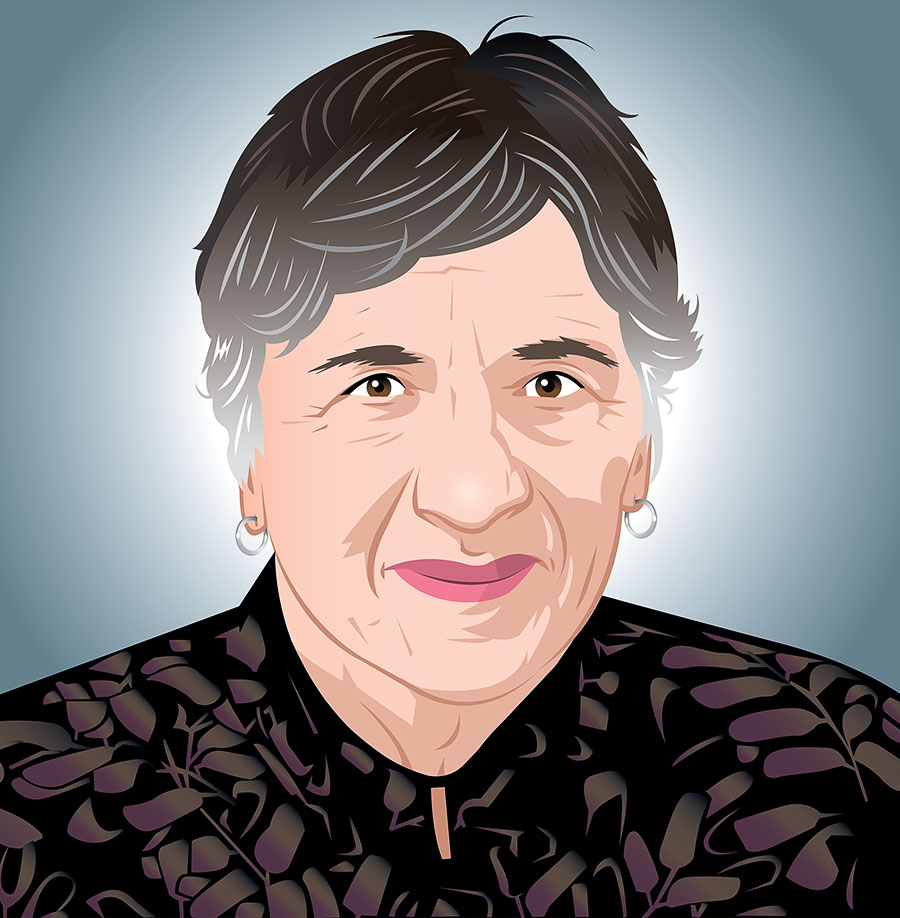■ My studio was criticized for years and years because we didn’t have a signature. Each project looks different. And that was seen as bad: “You should be producing a philosophy and perfecting it and bringing it to fruition.” But I’ve always thought that it is the process of design I’m perfecting, where I can truly understand the needs of a community and a site and a culture and a situation and make a design that’s beautiful.
■ It took 15 years to complete the Riverwalk. Part of it was the lack of maintenance on Lower Wacker and part of it was the water. The old dock wall was five feet above the river. We wanted to rebuild the riverbank so when you walked along the water, you felt more in touch with it. And the city was so afraid of having people fall in. I was born in the city, and the river was quite despicable in my childhood. People didn’t go near it. It was smelly, a sewer. But by the time that we got to phase 2, the actual design, everybody loved the river. They were using the Wabash Plaza for lunch. One of the things that made the Riverwalk successful is that the city simultaneously became more solicitous of the water quality of the river.
■ The ’60s were so socially active, and as a high schooler, I said to myself, We have to save the world. And I thought of architecture. I don’t know how I made that correlation, but it’s never let me down.
■ My clients would tell you that I’m challenging, kind of a royal pain in the ass. A lot of what we work on are big public works projects. And they’re so complicated and technical that there’s a tendency to say, “Well, design doesn’t matter for this one. Just do something nice, Carol.” But we believe design always matters. If you do a big rail project, the function is important and people will notice if it doesn’t run right. But what it looks like, how it acts, how friendly it is in your neighborhood, is equally important.
■ For the new federal building in Oklahoma City, we asked people who worked in the old Murrah building what their biggest goals were. Their first: Nobody park near the building. Because Timothy McVeigh pulled up his rental truck filled with fuel and fertilizer and blew it up. They didn’t want that happening again. The thing that came in second was close and convenient parking. So it’s like, How can you design a building? That was the moment we realized: This has to be workaday. And so we used a lot of materials to protect against blast, like concrete, but we detailed it so it was tactile and had a lot of openings. The second piece was figuring out how to make glass that wouldn’t blast into tiny pieces. Because the people who were injured were injured by flying glass. When we figured out those two things, we started to be able to compose a building that felt safe and was open.
■ You can’t let incidents like 9/11 or the Oklahoma City bombing change the quality of your cities. You can’t turn them into fortresses. The price is too high. The spaces have to solve social problems, not wall them off.
■ People say, “Carol, can you just stop pushing?” No, I can’t. I’m embarrassed that I can’t, but I can’t. If I did, I would be very unhappy.




